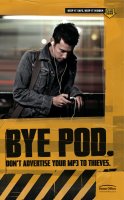Greenovate! City of Curitiba, Brazil Rapid Transit System
 City of Curitiba, Brazil Rapid Transit System
City of Curitiba, Brazil Rapid Transit System
Real world stories about innovators and innovative companies are an important way to learn and we place high value on them at Innovation Excellence. We are very pleased to begin a series of case studies on companies who have been curated by Hult International Business School and Center for Innovation, Excellence and Leadership (IXL Center) in their book Greenovate!
 The book Greenovate! documents 53 case studies that are defined by “sustainable, green innovations†(or “green ovationsâ€). Each profile combines business innovation with a synthesized concept of sustainability, from startups to leading global organizations. The next case study in this special Greenovate! case study series is:
The book Greenovate! documents 53 case studies that are defined by “sustainable, green innovations†(or “green ovationsâ€). Each profile combines business innovation with a synthesized concept of sustainability, from startups to leading global organizations. The next case study in this special Greenovate! case study series is:
City of Curitiba, Brazil Rapid Transit System
An eco-friendly, reliable, efficiently constructed, cost effective bus transport system
INNOVATION
A flexible network of buses and stations, that meets the needs of a rapidly growing urban environment without busting city budgets for capital investments in rail, has the capacity to serve an unlimited range of locations throughout Curitiba, achieving the speed and efficiency of a subway system.
SUSTAINABILITY
A highly reliable mass transport system that dramatically reduces automobile usage, fuel consumption and emission levels in the city. A versatile, cost- and time-effective model that can be implemented by making improvements to existing transport infrastructure and vehicles.
RESULTS
A low cost transit system used by over 75% of travelers in Curitiba, a city of three million plus. Eliminates about 27 million automobile trips annually, saving 10 million gallons of fuel and lowering the city’s CO2 emissions by 25%. A model for developing cities worldwide.
DRIVERS
POPULATION GROWTH:
Curitiba’s rapid population growth taxed the capacity of an antiquated electric trolley system, creating a dire need to improve the public transportation system
GOVERNMENT PUSH:
The government wanted to stimulate economic growth for the urban population and to facilitate greater mobility by improving the transportation infrastructure
SERVICE CAPACITY:
The outdated fare payment system and narrow bus doors created transportation bottlenecks, resulting in slow and inefficient service
BARRIERS
LEGACY CONSTRAINTS:
The legacy electric trolley service followed fixed routes — expansion of service capacity to new routes was constrained by the narrow city streets and a tight municipal budget
ECONOMIC SETBACKS:
Economic setbacks, including periods of hyperinflation, discouraged development of the roads necessary for an efficient bus transit system
TECHNOLOGY:
The municipality lacked the technology to develop a system that could reduce congestion at bus terminals
ENABLERS
ADMINISTRATION:
Mayor Moreira Garcez‘s commission for the streets permitted a local power company to explore the possibility of a bus network for the city
CUT MY COSTS:
The Institute for Research and Urban Planning in Curitiba (IPPUC) constructed roads for buses at 1/10th
the cost of laying a subway system, enabling systematic urban and economic development
DESIGN CHANGES:
Cylindrical tube-shaped station enables passengers to make fare pre-payment; bus design permits commuters to board and exit buses simultaneously
IMPACT
BUS-ENABLED COMMERCE:
The bus transport network better connects far-flung urban areas, increasing the trade and commerce within the city
BUILD ON SUCCESS:
Mayor Ivo Aruza Prereir commissioned the IPPUC to plan a integrated transport system that will support further urban development
SPEEDY SERVICE:
The city municipality reduced the passenger waiting time at the terminals to no more than 15 to 19 seconds per boarding—1/8th less than the original time
WHAT’S NEXT
The city municipality continues to improve the efficiency of the transport system through installation of sensors in its buses and along public transportation routes. Also, the city municipality plans to utilize 100% alternate energy sources to lower emission levels.
image credit: news.hult.edu; Brazil Rapid Transit
Wait! Before you go…
Choose how you want the latest innovation content delivered to you:
- Daily — RSS Feed — Email — Twitter — Facebook — Linkedin Today
- Weekly — Email Newsletter — Free Magazine — Linkedin Group


 Tyler McNally, Ronald Jonash & Dr. Hitendra Patel are co-authors of Greenovate! — Companies Innovating to Create a More Sustainable World and members of the leadership team at IXL CENTER, the Center for Innovation, Excellence & Leadership at Hult International Business School.
Tyler McNally, Ronald Jonash & Dr. Hitendra Patel are co-authors of Greenovate! — Companies Innovating to Create a More Sustainable World and members of the leadership team at IXL CENTER, the Center for Innovation, Excellence & Leadership at Hult International Business School.
NEVER MISS ANOTHER NEWSLETTER!
LATEST BLOGS
iPhone Followup – Innovation in a Box
My initial iPhone article highlighted why the iPhone will not be a success in its first incarnation. Make no mistake though, the introduction of the iPhone will revolutionize the mobile telephony market. Let’s answer some of the criticisms of the most innovative mobile handset in the history of mobile telephony:
Read MoreThe Growing Housing Divide
I was speaking with a friend of mine recently and he brought up an interesting point. He asserted that there was a widening gap in home prices between where people want to live and where people have to live. How else can you explain the housing price fall in most of the country while places like Seattle continue to have rising prices?
Read More




